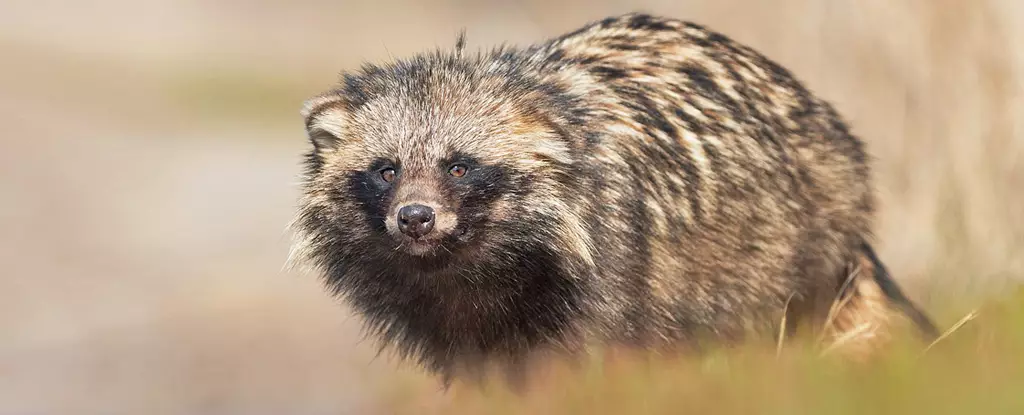The emergence of COVID-19 has profoundly affected global health, economies, and daily life. Among the many facets of this public health crisis, the source of the virus—SARS-CoV-2—has been pivotal in understanding how to mitigate future threats. Recent research has focused on the Huanan seafood market in Wuhan, China, identifying specific animals linked to the virus’s spillover into humans. By analyzing metagenomic data collected shortly after the market’s closure, scientists provide compelling evidence that sheds light on the natural origins of the pandemic.
The Huanan seafood market is a complex hub of diverse wildlife trade, often considered a melting pot where many species interact in close quarters. This environment creates optimal conditions for zoonotic transmission—the process through which diseases leap from animals to humans. The market was notably closed in January 2020, coinciding with the initial reports of an outbreak of a novel coronavirus in Wuhan, which raised alarms internationally.
The limiting factor in this investigation has been the absence of direct evidence linking specific animal hosts to early human cases of COVID-19. While conspiracy theories surrounding a potential lab leak persist, the consensus among virologists increasingly favors a natural spillover scenario. As researchers delve into the intricacies of wildlife trade, they highlight the urgent need for an in-depth understanding of how pathogens like SARS-CoV-2 jump from animals to humans.
The research conducted by scientists from the Chinese CDC was meticulous. After the market’s establishment was closed, they collected over 800 samples from a myriad of surfaces in the vicinity of animal stalls, drains, and sewers. Employing state-of-the-art metatranscriptomic sequencing techniques, the team succeeded in identifying not only the presence of SARS-CoV-2 but also the RNA from various animal species once housed in the market.
This comprehensive approach allows for a richer understanding of the viral ecosystem present at the time of the outbreak. Notably, the genetic sequencing data revealed mitochondrial genomes that pinpointed the existence of potential animal intermediaries that could have facilitated the virus’s transmission to humans.
Among the species identified in the market, the common raccoon dog emerged as the primary candidate for serving as an intermediate host. Its genetic presence in the samples, juxtaposed with SARS-CoV-2 RNA, provides a crucial link in the chain of transmission. Interestingly, the masked palm civet, previously implicated in the original SARS outbreak in 2002, also appeared in relevant samples.
This continuation of virus-host dynamics raises critical questions about wildlife management and the risks associated with keeping wild animals in close proximity to human populations. Ecologists emphasize that such scenarios heighten the chances of zoonotic diseases not just spilling over into human populations but also evolving and gaining the capacity for human-to-human transmission.
A synthesis of various studies and analyses points increasingly toward the Huanan market as the epicenter for the COVID-19 outbreak. The latest findings draw a clear picture of how infected animals could have entered the densely populated urban environment of Wuhan, where the conditions allowed the virus to ignite the chain of infection that would eventually lead to a global pandemic.
The analysis demonstrates that the genetic traits of early SARS-CoV-2 cases align closely with sequences found in samples from the market, suggesting that the initial spillover event may have occurred there. The research team also posited that infected wildlife may have been introduced to the market between mid- to late-November 2019.
Understanding the origin of SARS-CoV-2 is not just a retrospective exercise; it has pressing implications for global public health policy. The research underscores the necessity of stringent wildlife trade regulations and effective surveillance systems that can identify and mitigate zoonotic spillover events before they can catalyze another pandemic.
As researchers and policymakers grapple with improving lab safety protocols, a parallel focus on wildlife management is essential. By recognizing the interconnectedness of ecological systems and human health, the scientific community can work towards preventing future outbreaks stemming from zoonotic viruses.
The scientific journey to unravel the origins of COVID-19, particularly its link to the Huanan seafood market, is ongoing. Through rigorous analysis of genetic data and environmental samples, researchers continue to piece together an intricate narrative of viral evolution and transmission. While the findings do not conclusively prove which animals were infected and responsible for the initial human cases, they nonetheless strengthen the case for the natural origins of SARS-CoV-2. This research represents not just a key chapter in understanding COVID-19 but also serves as a critical reminder of the importance of biodiversity and wildlife health in safeguarding human populations against future pandemics.


Leave a Reply